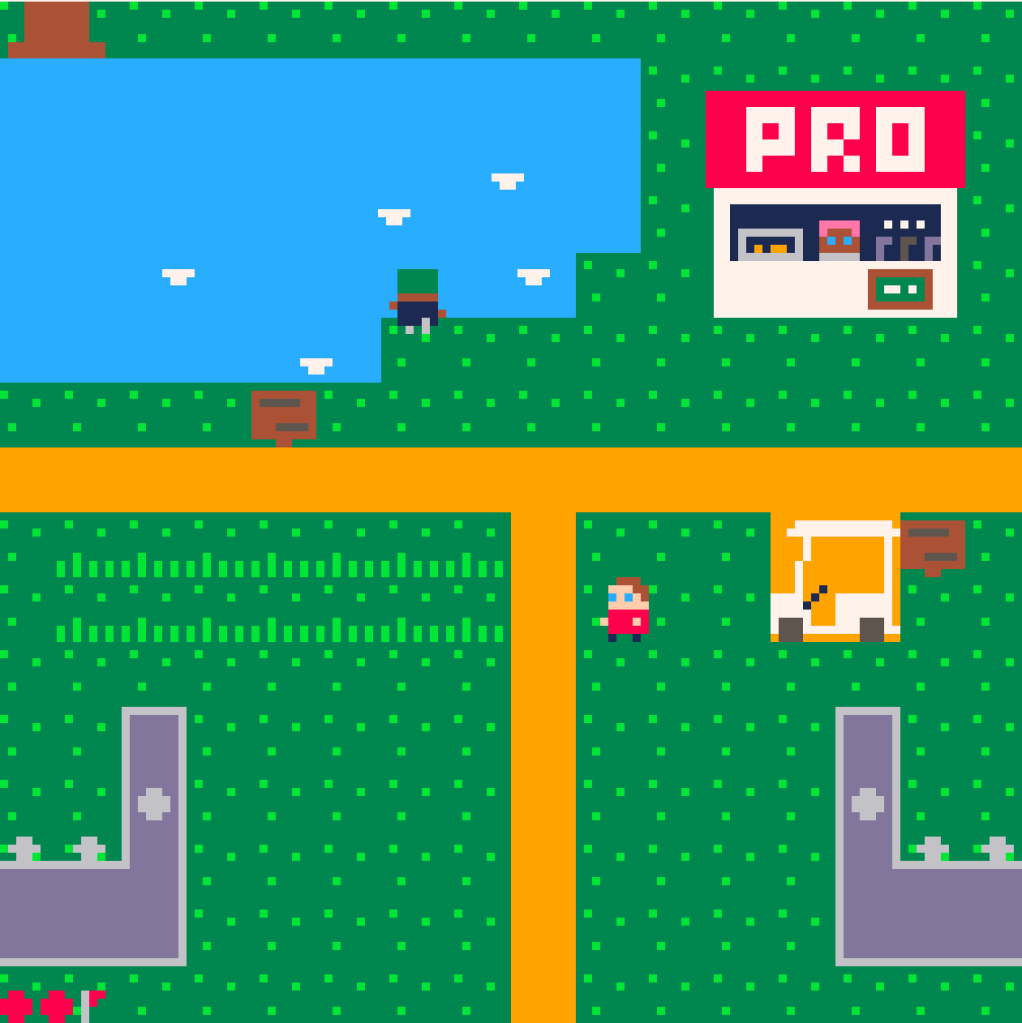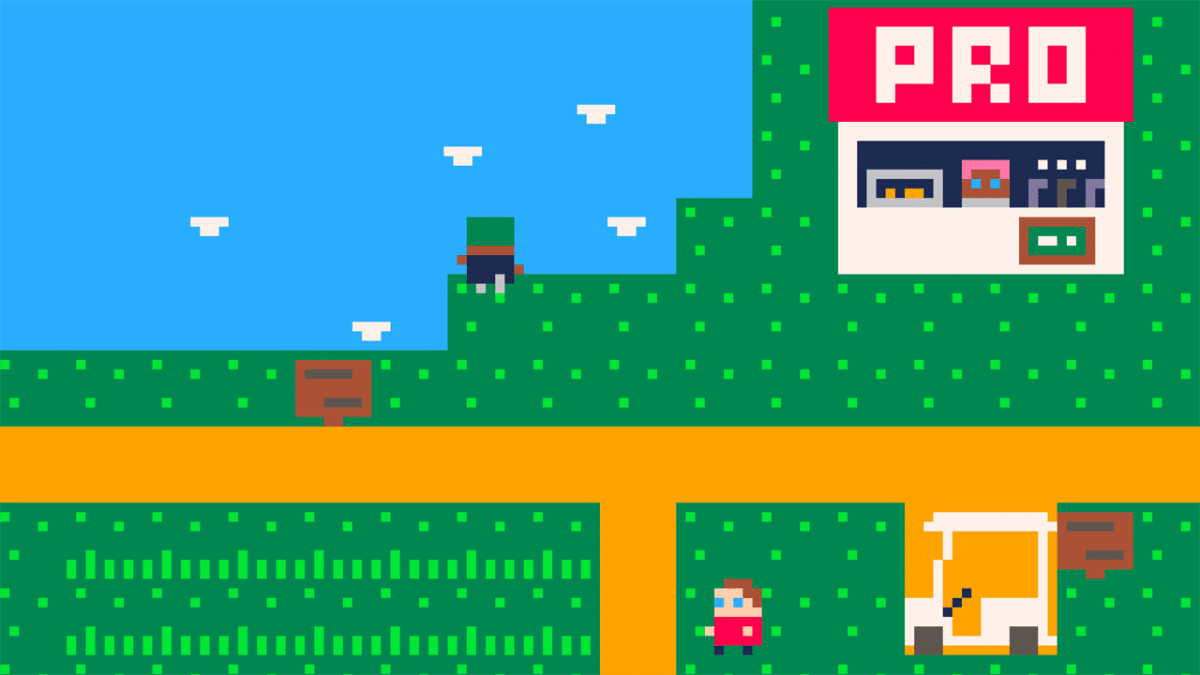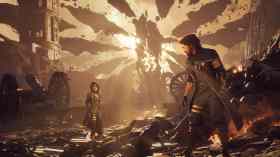To help reflect on the year that was, GamesHub has asked contributors, Australian game developers, and friends of the site to talk about some of their favourite games or gaming-related highlights of 2021. Ring of Pain’s Simon Boxer, Unpacking’s Wren Brier, and writer and ACMI curator Jini Maxwell have been some of our highlights, and now it’s Brendan Keogh’s turn.
Brendan is a researcher at Queensland University of Technology in the Digital Media Research Centre, and the co-organiser of the Squiggly River Game Collective. He has been active in the Australian game making community for over a decade as a critic, educator, researcher, and amateur gamemaker.
He is the author of A Play of Bodies: How We Perceive Videogames; Killing is Harmless; and The Unity Game Engine and the Circuits of Cultural Software (co-authored with Benjamin Nicoll). He’s also previously written for GamesHub about how Australia’s video game tax offset is not a silver bullet, and was a mentor for our games writing program, Wordplay.
You can Brendan on Twitter: @BRKeogh
Unpacking – Witch Beam Games
2021 was a strong year for independent Brisbane games, and I’m starting my list with two of the strongest. First is Witch Beam’s Unpacking, which joins a prestigious list of games that take mundane, tedious everyday tasks and turn them into meditative and calming virtual experiences.
Opening each box, choosing where to place each item, and then flattening each box is intrinsically satisfying. You don’t need points, a timer, a three-star rating, or a clap on the back to feel accomplished at the end of each level. You’re not washing the dishes to have clean dishes here; you’re washing the dishes to wash the dishes. Sitting back at the end of each level and just looking at the result of your labour is all the reward you need—something the developers clearly understood themselves with the inclusion of the timelapse mode, replaying every action you took, only amplifying this sense on intrinsic satisfaction.
This is all I expected from Unpacking. I didn’t expect to also receive a masterclass of interactive storytelling. With no voices, no (visible) characters, and practically no words, Unpacking tells a sophisticated and relatable story of a woman’s life through the objects she collects, keeps, and discards.
Others have highlighted the particular expressive power of the stage where the protagonist moves in with a partner, forced to fit their life around the partner’s existing belongings. But to me, an equally effective level was the sharehouse. The chaos of untouchable items in the kitchen and loungeroom forces the player to find whatever room they can around the house’s existing possessions. The existing location of board games gently suggests where you should put your own board games. Your own GameCube needs to squish in awkwardly near the existing PlayStation. It directly and jarringly challenges the intrinsic satisfaction the previous levels tell you to expect, in a way that powerfully captures the alienating sense of moving into a sharehouse for the first time. And then, of course, your own room is completely blank, providing an island of you in this broader ocean.
Read: The making of Unpacking: From bullet-hell to domestic heaven
The semi-autobiographical nature of Unpacking was certainly amplified for me as a Brisbane game. Play it, I felt like I had been in those exact student dorms, that exact sharehouse. The bridge visible outside the city apartment is clearly Brisbane’s Story Bridge. Yet, if its global success is anything to go by, the intimate feeling I had with Unpacking might have had nothing to do with Brisbane at all, and everything to do with the developers’ accomplishment of creating a highly relatable game that captures something essential and shared.
Unpacking is simple, straightforward, charming, and immediately graspable. It is also one of the most elegantly and sophisticatedly designed games of recent years.
Webbed – Sbug Games
Another strong independent release from Brisbane this year is, of course, Webbed. At some point in 2019, Riley Neville rocked up to the Squiggly River Game Collective meetup with his vampire game he’d been working on for a while. Everyone enjoyed it a lot! But then, Riley swapped over to a smaller side project he’d been working on. This bare-bones little room with a spider, where the spider could shoot webs like a grappling hook, create platforms, swing around, and create complex web structures.
You can still find a version of this early prototype that would become Webbed on Riley’s itch page. The group’s reaction to the prototype was immediate and pronounced—as was everyone else’s when Sbug began releasing trailers and gameplay footage.
A fundamental of videogame design is that parabolas feel good: Mario jumping, slingshotting around a planet, launching an angry bird at some green pigs, throwing a grenade, and, of course, swinging on a rope or using a grappling hook. You see ten seconds of Webbed footage and you know exactly how it would feel to play this game. It’s immediately understandable.
But Webbed is more than a grappling hook platformer. Another fundamental of videogame design is that any one object should do at least two things (a point detailed in Ojiro Fumoto’s 2016 GDC postmortem of Downwell). The player can create new platforms by sticking two ends of the web to different surfaces. They can drag and move items by using webs to stick them together. They can create complex string instruments. Riley and colleague Noah Seymour have used this robust toolkit of possible actions to build a complex and satisfying world of open-ended puzzles that can be solved in a number of creative ways—ways that will no doubt become even more creative in the coming years as the speedrunning community inevitably grows around the game.
Warioware: Get It Together – Nintendo
The Warioware series has always had a special place in my heart. The short, absurd 5-second microgames are unlike any other experience offered by videogames. Each microgame begins with a frantic, desperate single second where your eyes scan the screen and figure out just what game it is you have to complete in the seconds remaining to you. Once the game is complete, you have a few seconds to regroup and, often, to finally laugh at the absurd gag that occurred during the previous game. And then, suddenly, you’re trying to figure out the next game. It moves forward at breakneck speed, equal parts stressful and exhilarating.
Every Warioware builds its library of microgames around a single interaction gimmick: tilting, tapping, touching, etc. Get It Together is slightly more complex, requiring the player to control a typical videogame avatar within the world of each microgame, and then use that character to complete the microgames. For instance, if the microgame is unsheathing a sword, instead of just tapping the sword in Get It Together you need to navigate your character to push or pull the sword out of its sheath.
This is made more complex by the vast array of characters Get It Together provides: some can fly, some can walk, some can jump, some can shoot upwards, some can shoot downwards. Now, in addition to frantically figuring out what game you are faced with, you also need to figure out which character you’ve been given, and how that character’s ability relates to the microgame in front of you. This multiplies the complexity and the franticness. You may have figured out a microgame with a certain character, but not yet with a different character. More complex still is when the game is played in local co-op mode and you also need to figure out the other player’s character and communicate as to who is going to do what—very, very quickly.
What’s remarkable about Get it Together is how, somehow, every microgame is feasible with every character. Some games are of course harder or easier with certain characters, but never is it impossible. The possibility space of each seemingly very simple microgame is vast. The ways in which a character’s slightly different moveset radically changes the challenge and feel of a single microgame is very fascinating to experience.
As a final note, there’s more than a hint of Farbs’s classic 2008 Australian independent title ROM CHECK FAIL here. Farbs’s title remixes well-known videogames to create unique mixes of characters, enemies, and environments, sticking the player in situations, not unlike Get It Together, they have to frantically and quickly figure out just what movesets are available to them, and how to approach the puzzle in question.
Essentially, I’m a sucker for any game that has you play with different characters that have different affordances. It’s a reminder of how any engagement we have with a virtual world is always mediated through the virtual body that we rely on to enter that virtual world: what it can do, and what it can’t.
Sea of Thieves – Rare
I’m generally a late adopter of new console generations. As far as I’m concerned, PlayStation 4 games still look great so I don’t really see any point in buying yet another box. Yet, the idea of playing Flight Simulator on the couch, and the massive collection on Xbox Game Pass, finally got the better of me, and so this year I bought an Xbox Series S.
I feel mostly vindicated in the pointlessness of this new box given that the main use I have gotten out of the console thus far has been replaying old Xbox 360 games I haven’t played for a decade, as well as some more recent last-gen games on Game Pass that I had missed in recent years. But another unexpected benefit of the new dust-collecting box in my lounge room is the ability to play games with PC-gaming friends.
And so 2021 saw me much belatedly finally getting into Rare’s pirate simulator Sea of Thieves. Throughout the year, it’s become a wonderful space for just hanging out with interstate friends I haven’t seen since before the pandemic. We will chat about life, work, families, lockdowns one second as we sail across the seas, and the next we are frantically coordinating wind and cannons and buckets as another player ship or a storm or a megalodon or anything else approaches over the horizon. The next second, I am probably falling overboard at an inopportune time.
The beauty of Sea of Thieves is that nothing actually matters. You don’t get better weapons or a more skilled pirate. There are persistent currencies, of course, that can be used to buy all sorts of cosmetic items. And, yes, you have a reputation with the various in-game’s fractions that give access to other cosmetic items. But every time you load the game up, you’re effectively starting from scratch in terms of supplies, loot, and missions.
Each time you start up the game with your friends, you choose some general, inconsequential missions (deliver this, steal that, find this), set off, and almost inevitably stumble across some pirate-ass stuff that happens along the way. Sea of Thieves is less of a game and more of a playground that offers just enough in the way of goals and rewards to ensure that you are very likely to end up having a very pirate-y experience.
One anecdote that I doubt is exceptional: my friend and I were heading back to an outpost to sell some valuable treasure when we saw another, much larger, player boat coming towards us. There was no way we would survive that fight. Instead, we put out most valuable treasure into a single chest, and I jumped overboard and swam to a nearby island. While my friend distracted their ship, I ran deep into the island’s caves and placed the chest behind some rocks. I returned to the surface just as our ship was sinking and, eventually, was killed by the other players myself. Sometime later, after we respawned with our ship across the map, we carefully returned to the island, reclaimed our most valued possessions, took them to the outpost, and sold them.
While the game’s most recent update formally allows players to bury treasure, we effectively did that. We were under attack so we hid our treasure and returned to it later. It was a thrilling experience that felt like a victory even as we were killed and looted. And that’s the value of Sea of Thieves design: every experience just feels pirate-y.
Making My Own Game – Me
Finally, and this one is a little cheeky, is my own game that I have been working on all year, called Brendan Keogh’s Putting Challenge. BKPC is a simple golf game I am making in GameMaker. But I won’t bore you with the details as I am not actually here trying to just shamelessly plug my own game. Rather, I want to talk about the act of making a game itself.
I am not a professional videogame developer by any stretch. But for several years I’ve been mucking around with tools like Unity and Pico-8 and tossing little trashy games up on my own itch page. Most of these games took a week or two to make, and were made with very little interest in how ‘complete’ or ‘polished’ they were. Most come with text files explaining how to play them in lieu of any sort of onboarding or tutorials. Most have some sort of game-breaking bug I couldn’t be arsed fixing. As a hobbyist, I have generally thought of my own gamemaking activity as something akin to doodling in a notepad: I do it for myself, not for an audience or a consumer.
With BKPC, however, I’ve shifted gears. A professional developer friend convinced me I should try releasing this game on Steam. Not because it will be a massive commercial success, but for the experience of having done it.

There’s a cliche saying that the last 10% of a project takes 90% of the time. While trying to make an actual, polished game that is ‘complete’ enough to release on Steam and ask people to pay real money for, I’ve come to realise that previously I’d only ever done 90% of the work of game development, and thus only spent about 10% of the time it takes to make a game on my previous activities. This, of course, isn’t to say that ‘amateur’ or ‘hobbyist’ games are less important or real or anything like that, but that there are all sorts of other tasks and considerations that matter when one tries to release a game commercially.
And so, throughout this year, as an amateur gamemaker hoping to release a videogame, the time that would normally be spent playing games (my evenings and weekends) have instead been spent making a game. Sitting on the couch or the deck with my MacBook, writing spaghetti code and making bad sprites. Figuring out for the first time how to save and load data. Thinking, for the first time, about how this game will in any way make sense to a player without me standing there telling them how to play it. Looking, for the first time, at the back-end of Steam and all the work it takes to wire up a game to work with the platform in terms of trophies, remote play, updates, and all that complicated stuff.
I always knew making videogames was hard and complicated and absurd, but this year through my own attempts to complete and release the smallest, most modest commercial game, I’ve gained a whole new perspective on just how much labour, how much effort, how much bullshit is required to produce these weird, hacky, playful bits of software.
For more of GamesHub’s Best of 2021 content, have a look at our picks for Best PlayStation Games of 2021, Best Xbox Games of 2021, Best PC Games of 2021, Best Nintendo Games of 2021, Best Mobile Games of 2021, Best Australian Games of 2021, our overall Best Games of 2021, and our Game of the Year for 2021.
Our spotlight on personal highlights includes Ring of Pain’s Simon Boxer, Unpacking’s Wren Brier, ACMI curator Jini Maxwell, games researcher Brendan Keogh, the 2021 Wordplay mentorship participants, producer and consultant Meredith Hall, GamesHub content lead Leah Williams, critic David Wildgoose, contributor Chris Button, and Nicholas Kennedy, host/content creator Jess McDonell, SUPERJUMP Editor-In-Chief James Burns, and GamesHub Managing Editor Edmond Tran.





